 W
WA sugar refinery is a refinery which processes raw sugar from cane or beets into white refined sugar.
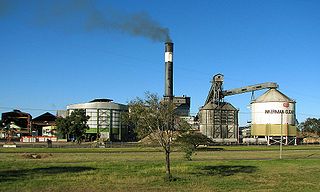 W
WA sugar cane mill is a factory that processes sugar cane to produce raw or white sugar.
 W
WThe Boston Sugar Refinery was a sugar refinery based in East Boston, Massachusetts, United States. The refinery was established in 1834, and in 1860 it was credited as the first refinery to create granulated sugar. Additionally, it was the first manufacturing business in East Boston.
 W
WCantley is a village and former civil parish, now in the parish of Cantley, Limpenhoe and Southwood, in the English county of Norfolk. Cantley is within the Broads Special Protection Area. The village lies on the north bank of the River Yare, some 17 km east of the city of Norwich, 15 km south-west of the town of Great Yarmouth and the same distance north-west of the Suffolk town of Lowestoft.
 W
WCantley is a village and former civil parish, now in the parish of Cantley, Limpenhoe and Southwood, in the English county of Norfolk. Cantley is within the Broads Special Protection Area. The village lies on the north bank of the River Yare, some 17 km east of the city of Norwich, 15 km south-west of the town of Great Yarmouth and the same distance north-west of the Suffolk town of Lowestoft.
 W
WCatherineberg Sugar Mill Ruins is an historic site located in the Virgin Islands National Park, east of Cruz Bay on Saint John, U.S. Virgin Islands. The ruins are an example of an 18th-century sugar and rum factory.
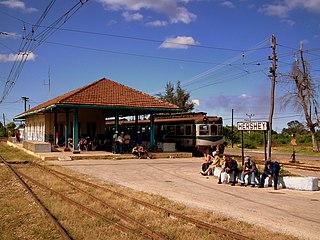 W
WHershey is a Cuban village and consejo popular of the municipality of Santa Cruz del Norte, in Mayabeque Province.
 W
WCentral Coloso, also known as Coloso Sugar Cane Refinery, was a long-running sugarcane refinery in Aguada, Puerto Rico. The refinery was established in late 19th century becoming one of the biggest sugar emporiums in the island. It remained operational until 2003 becoming the last sugarcane refinery to cease operations on the island.
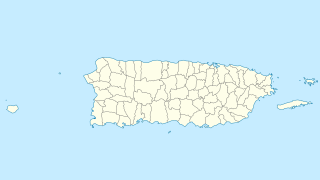 W
WCentral Cortada, also known as the Cortada Sugarcane Refinery, was a sugarcane plantation and refinery located in Descalabrado, Santa Isabel, Puerto Rico. The area where the refinery is located has been used for the growth and processing of sugarcane since the 18th century.
 W
WCentral Guánica was a sugar mill located in Ensenada barrio in the Municipality of Guánica, Puerto Rico. It was one of the largest sugar mills in the Caribbean and until World War I it was one of the largest mills in the world. It ceased operations in 1982.
 W
WCentral San Vicente was the first sugarcane refinery in Puerto Rico, established in 1873 by Leonardo Igaravidez at Vega Baja.
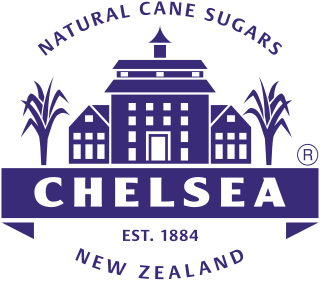 W
WNew Zealand Sugar Company Limited is a long-established business and landmark in Birkenhead, New Zealand, located on the northern shore of Auckland's Waitemata Harbour. The company is also known colloquially as "Chelsea Sugar", taking reference from the company's branded sugar "Chelsea", and the site is also colloquially known as the "Chelsea Sugar Refinery", or "sugar works".
 W
WCSR Yarraville is an operating sugar refinery at Whitehall Street, Yarraville, City of Maribyrnong, Victoria, Australia. It was built from 1872 to 1980s. It is also known as Colonial Sugar Refining Company Refinery of Yarraville. It was added to the Victorian Heritage Register on 21 October 1992.
 W
WThe Domino Sugar Refinery is a mixed-use development and former sugar refinery in the neighborhood of Williamsburg in Brooklyn, New York City, along the East River. When active as a refinery, it was operated by the Havemeyer family's American Sugar Refining Company, which produced Domino brand sugar and was one of several sugar factories on the East River in northern Brooklyn.
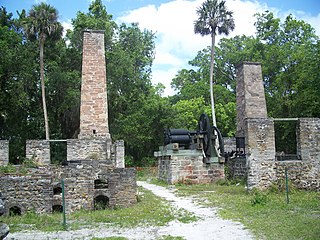 W
WThe Dunlawton Plantation and Sugar Mill, a 19th-century cane sugar plantation in north-central Florida, was destroyed by the Seminoles at the beginning of the Second Seminole War. The ruins are located at 950 Old Sugar Mill Road, Port Orange, Florida. On August 28, 1973, the site was added to the United States National Register of Historic Places under the title of Dunlawton Plantation-Sugar Mill Ruins.
 W
WThe 2008 Georgia sugar refinery explosion was an industrial disaster that occurred on February 7, 2008, in Port Wentworth, Georgia, United States. Fourteen people were killed and forty injured when a dust explosion occurred at a sugar refinery owned by Imperial Sugar. Dust explosions had been an issue of concern among United States authorities since three fatal accidents in 2003, with efforts made to improve safety and reduce the risk of recurrence.
 W
WThe Guitang Group is a state-owned conglomerate operating China's largest sugar refinery with over 3,800 workers and 14,700 ha land for cultivating cane. Cost of sugar production in Guigang is high due to a multitude of small farms growing canes with low sugar content, resulting in large amounts of by-products that go un-utilized by small-scale refineries and generate high levels of emissions to the air, water, and soil.
 W
WHacienda Mercedita was a 300-acre (120 ha) sugarcane plantation in Ponce, Puerto Rico, founded in 1861, by Juan Serrallés Colón. Today Hacienda Mercedita no longer grows sugarcane and its lands are instead used for growing mangoes, grasses, landscape plants and palms, coconut palms, bananas, and seeds.
 W
WThe Haidu Mill or Haʻikū Sugar Mill was a processing factory for sugarcane from 1861 to 1879 on the island of Maui in Hawaii.
 W
WThe McIntosh Sugarworks, near St. Marys, Georgia, was built in the late 1820s by John Houstoun McIntosh. They are a significant example of tabby concrete architecture and represent an industrial component of southeastern plantation agriculture. The Tabby Ruins, as they are also known, are at 3600 Charlie Smith Sr. Highway at Georgia Spur 40, six miles north of St. Marys. The entrance is approximately across the street from the entrance to the Naval Submarine Base Kings Bay, on Charlie Smith Highway, at 30.79310°N 81.57712°W.
 W
WMeeker Sugar Refinery is located in Meeker in south Rapides Parish, Louisiana. The refinery was added to the National Register of Historic Places on November 16, 1987.
 W
WThe New Smyrna Sugar Mill Ruins is a historic site in New Smyrna Beach, Florida, at 600 Old Mission Road, one mile west of the Intracoastal Waterway. On August 12, 1970, it was added to the U.S. National Register of Historic Places.
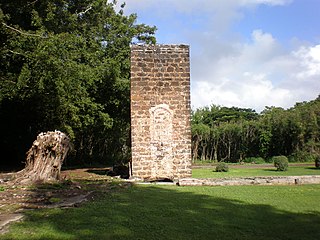 W
WThe Old Sugar Mill of Kōloa was part of the first commercially successful sugarcane plantation in Hawaiʻi, which was founded in Kōloa on the island of Kauai in 1835 by Ladd & Company. This was the beginning of what would become Hawaii's largest industry. The building was designated a National Historic Landmark on December 29, 1962. A stone chimney and foundations remain from 1840.
 W
WThe Racecourse Mill is a sugar mill located in Racecourse, Mackay, Queensland and is one of the largest sugar refineries in Australia. Other sugar cane mills located in the Mackay Region include; Marian Sugar Mill, Pleystowe Sugar Mill, Farleigh Mill and Plane Creek Mill at Sarina. Pleystowe Mill was the oldest surviving mill in the district but closed in 2008.
 W
WThe Redpath Sugar Refinery is a sugar storage, refining and museum complex in Toronto, Ontario, Canada. The site is located east of Downtown Toronto, the intersection of Queens Quay and Jarvis Street.
 W
WThe Rosalie Plantation Sugar Mill is located in Rapides Parish, Louisiana near Alexandria, Louisiana. It was listed on the National Register of Historic Places in 1976.
 W
WHacienda Mercedita was a 300-acre (120 ha) sugarcane plantation in Ponce, Puerto Rico, founded in 1861, by Juan Serrallés Colón. Today Hacienda Mercedita no longer grows sugarcane and its lands are instead used for growing mangoes, grasses, landscape plants and palms, coconut palms, bananas, and seeds.
 W
WSugar Refinery in Čukarica or Old Sugar Factory is a defunct industrial complex in Belgrade, the capital of Serbia. Built in 1901, it was the first sugar factory in Serbia. In 1984 it was placed under protection as a cultural monument.
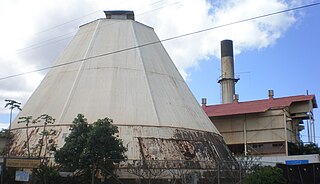 W
WThe Waialua Sugar Mill, formally known as the Chamberlain Plantation, was a sugarcane plantation and historical sugar mill, located in the town of Waialua on the North Shore of Oahu. It was in operation from 1865 until 1996.
 W
WYulee Sugar Mill Ruins Historic State Park is a Florida State Park located in Homosassa, off U.S. 19. It contains the ruins of a forced-labor farm owned by David Levy Yulee. Yulee was an enslaver and a delegate of the Florida Territorial Legislative Council. After Florida became a state, he was elected by the legislature in 1845 to the United States Senate, becoming the first American of Jewish heritage to serve there. After Florida seceded from the Union, Yulee served in the Confederate Congress. He is credited with having developed a network of railroads that tremendously boosted the state's economy.